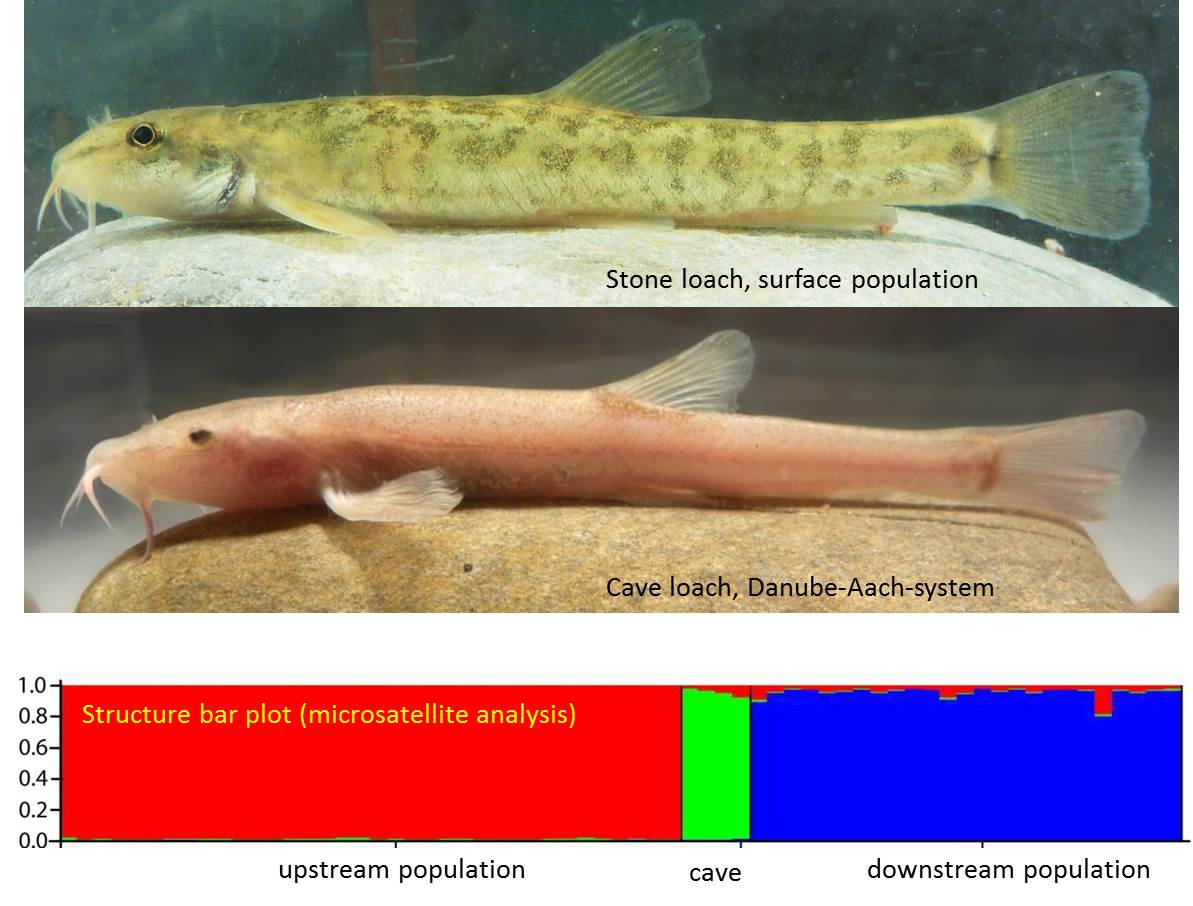Sensational finding, Europe´s first cave fish discovered near Lake Constance
Sensational finding, Europe´s first cave fish discovered near Lake Constance
In summer 2015, we, a team of cave divers and researchers from the Universities of Konstanz, Oldenburg and the IGB Berlin, have detected the first European cave fish. Recently, our findings have been published in Current Biology in April 2017 (03rd April, 2017)
Although most European cave animals (including mainly invertebrates but also the famous olm) live in Southern Europe (Dinaric karst in the Balkans), the cave fish was found surprisingly far in the North at 47° latitude in Southern Germany. This is spectacular as it was believed before, that the Pleistocene glaciations have prevented fish from colonizing subterranean habitats north of 41° latitude. The cave fish, loaches of the genus Barbatula, have been found in an underground karst water system called the Danube-Aach-system where percolating water from the Danube runs to the Radolfzeller Aach and from there to Lake Constance.

First genetic studies together with knowledge on the geological history of the region indicate that the cave loach population is amazingly young being not older than maximum 20 000 years. Nevertheless, the fish show typical adaptations to cave life such as a pale body coloration, much smaller eyes, larger nares and barbels when compared to loaches from surface locations nearby. Amicrosatellite analysis showed divergence between the cave fish and the surface populations in the Danube (upstream) and Radolfzeller Aach (downstream) indicating isolation of cave fish in the underground system.
With our finding we show that:
- Adaptation to subterranean habitats can be fast and few thousand years might be enough for a fish to adapt to cave life.
- Cave fish could exist virtually everywhere in principle and there is no good reason to expect long evolution times for cave environment adaptation.
- Even in areas of the world, where we would believe all biodiversity is known, we can still make new, spectacular discoveries, even in well studied groups of vertebrate
In the future we would like to describe and study this fantastic new cave fish in more detail. Moreover, we see the potential for very interesting and challenging scientific studies. We are making plans to get good funding for further genetic, genomic and behavioral analysis of the cave fish. We want to do comparative work with cave individuals and surface fish to investigate which characters e.g. have a genetic basis and which are a plastic response to the underground environment. We believe that the cave loaches might become a new model system for cave fish research. They stand out in that we know how young they must be as a lineage. Hence, they can reveal the very first, initial steps towards life in caves.
Behrmann-Godel J, Nolte AW, Kreiselmaier J, Berka R, Freyhof J (2017) The first European cave fish. Current Biology, 27,R243-R258, April 3. (doi: 10.1016/j.cub.2017.02.048)

